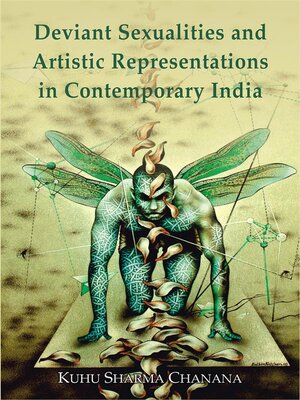
Sign up to save your library
With an OverDrive account, you can save your favorite libraries for at-a-glance information about availability. Find out more about OverDrive accounts.
Find this title in Libby, the library reading app by OverDrive.



Search for a digital library with this title
Title found at these libraries:
| Library Name | Distance |
|---|---|
| Loading... |
Representation of non-normative sexualities is still a tantalizing dream in India, even within the oblique and supposedly more liberal platforms like art and literature. Catering to this need, this study focuses on the exploration of the deviant sexualities in cinema, photography and literature, specially in the Indian context. Unfortunately, even within the queer artistic explorations, hijras have not been much represented and therefore the first part of the book aims to excavate the multiplicity of the transgender lives by analysing various art forms, having transgender cinema and hijra photographic series as the major thrust areas. These tales of plain subjugation hide convoluted issues like necropolitics, overlap among sports, gender identity and nationalism, crazy-queen syndrome, pansexuality, transfeminism and transmisogyny.
The second part of this book deals with the contemporary gay and lesbian literature and how a specific kind of spatial appropriation is visible there. Through these artistic works, there is an attempt to excavate the specific Indian queer spatial experiences which are quite different from the visibility-centric coming out narratives of the West. As opposed to perceiving invisibility only as a monolithic technique of erasure, these works demonstrate that secrecy and camouflage are also strategies to combat the insidious effects of homophobia. And since Indian spatial configuration produces many homosocial spaces, the unique coexistence of homo and hetero desires is a specific feature of Indian ethos. Thus, the mutually symbiotic relationship between art and emancipatory politics is quite evident from the detailed discussion on various art forms that depict queer lives. The key issues that have been explored through this book are necropolitics, issues surrounding sex-reassignment surgery (SRS), transfeminism, exploration of queer geographies including death scapes, AIDs citizenship and queer flânerie. It indubitably legitimizes somewhat the role of art in queer politics at a fundamental level.
The second part of this book deals with the contemporary gay and lesbian literature and how a specific kind of spatial appropriation is visible there. Through these artistic works, there is an attempt to excavate the specific Indian queer spatial experiences which are quite different from the visibility-centric coming out narratives of the West. As opposed to perceiving invisibility only as a monolithic technique of erasure, these works demonstrate that secrecy and camouflage are also strategies to combat the insidious effects of homophobia. And since Indian spatial configuration produces many homosocial spaces, the unique coexistence of homo and hetero desires is a specific feature of Indian ethos. Thus, the mutually symbiotic relationship between art and emancipatory politics is quite evident from the detailed discussion on various art forms that depict queer lives. The key issues that have been explored through this book are necropolitics, issues surrounding sex-reassignment surgery (SRS), transfeminism, exploration of queer geographies including death scapes, AIDs citizenship and queer flânerie. It indubitably legitimizes somewhat the role of art in queer politics at a fundamental level.







